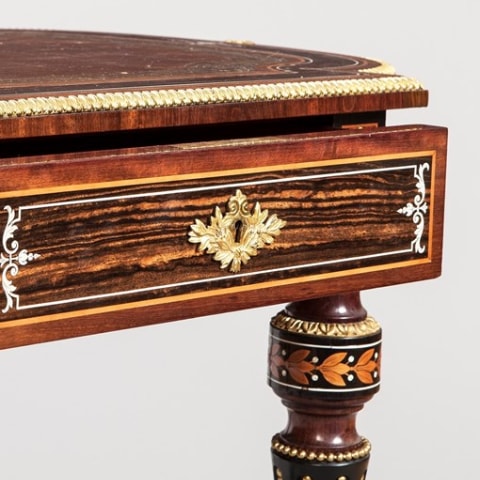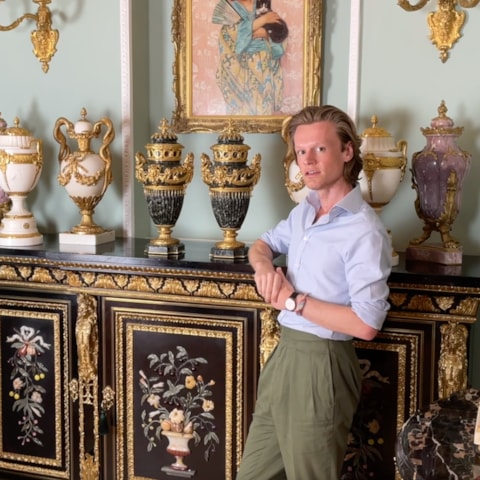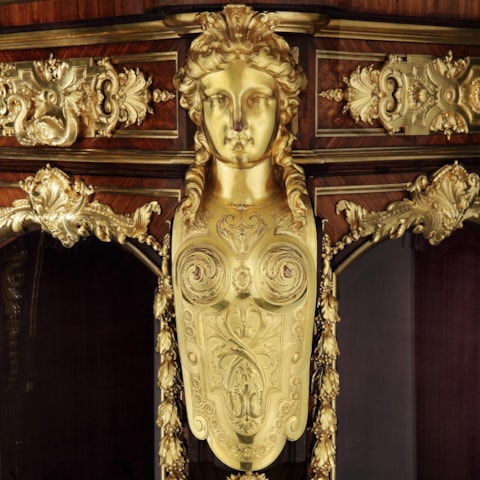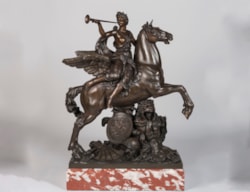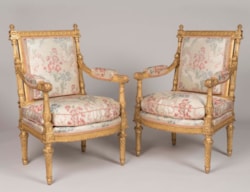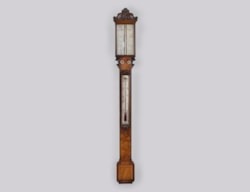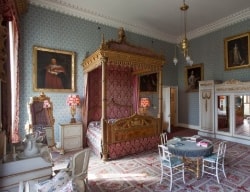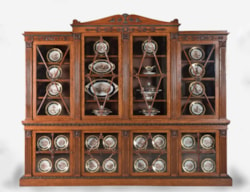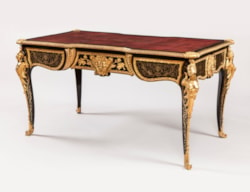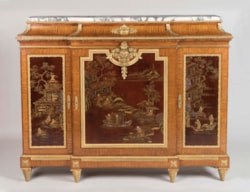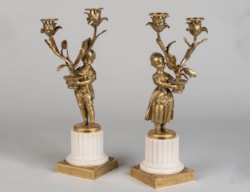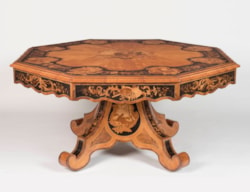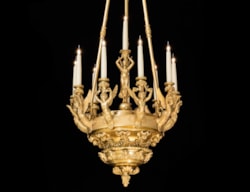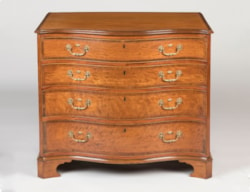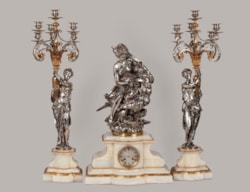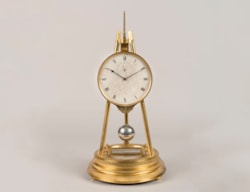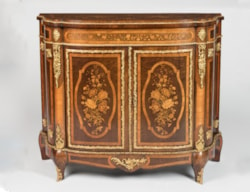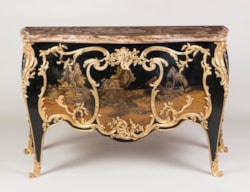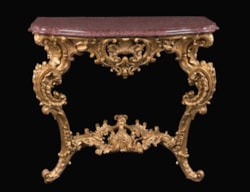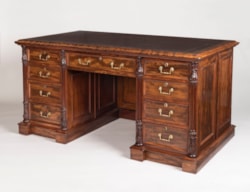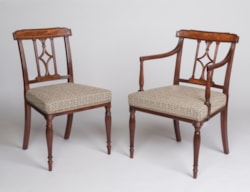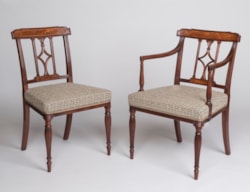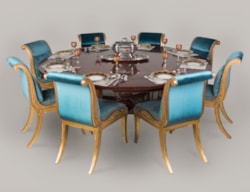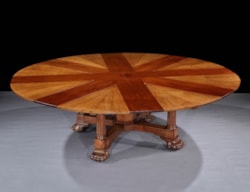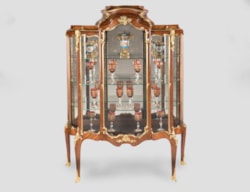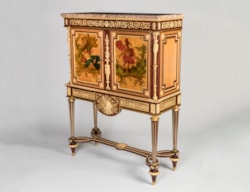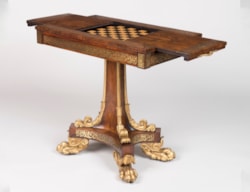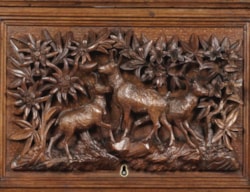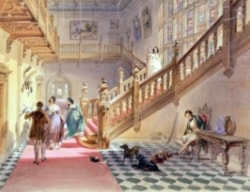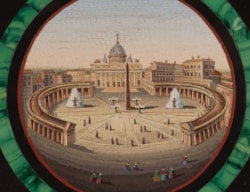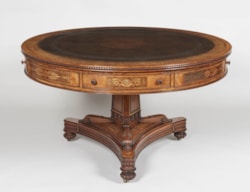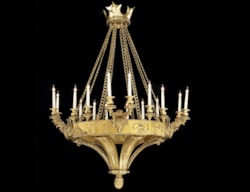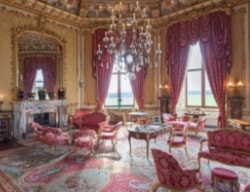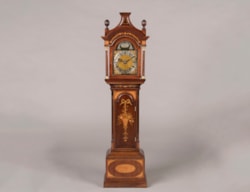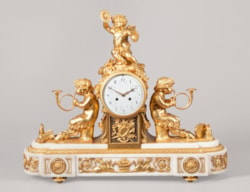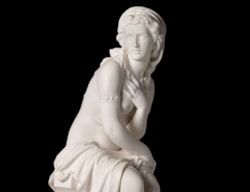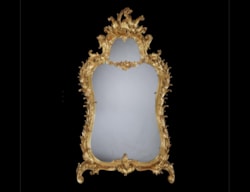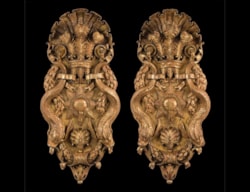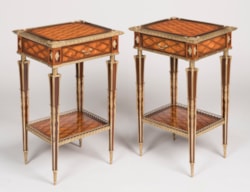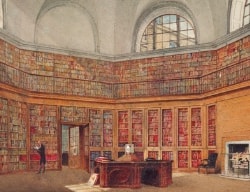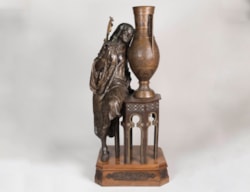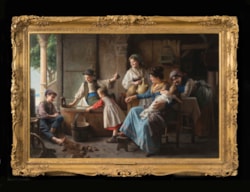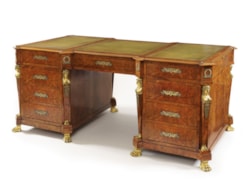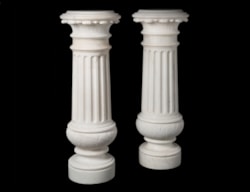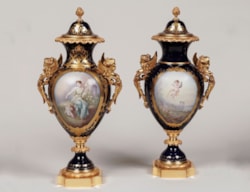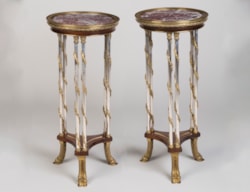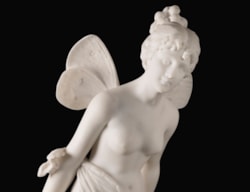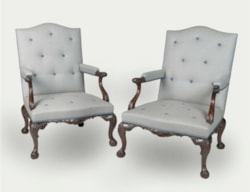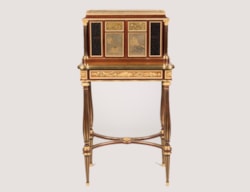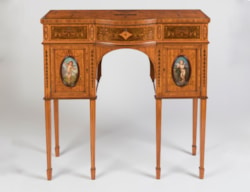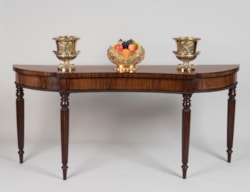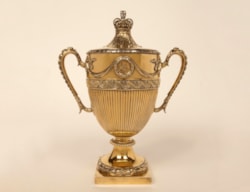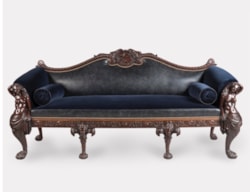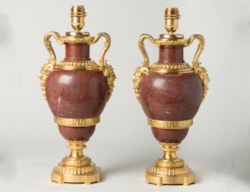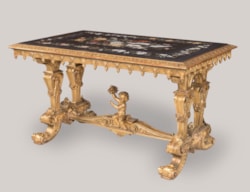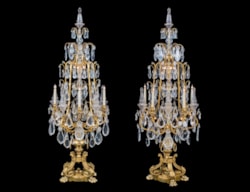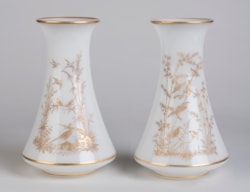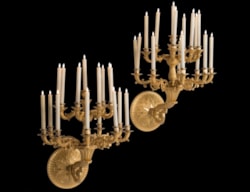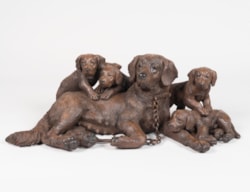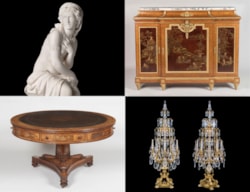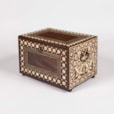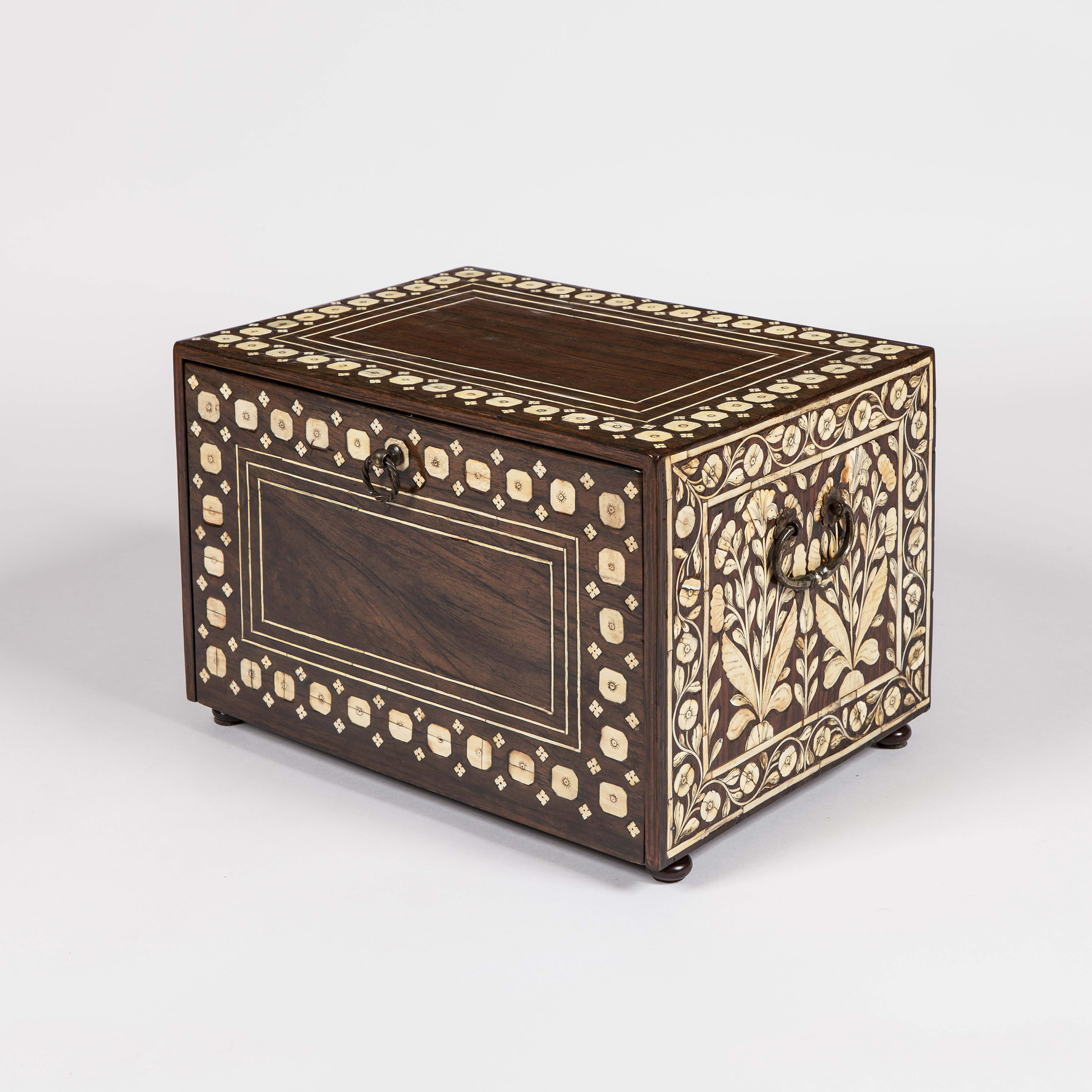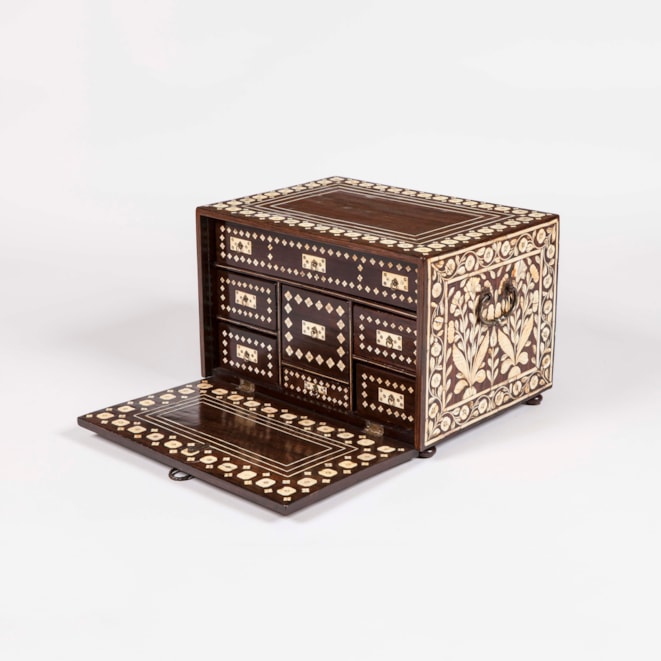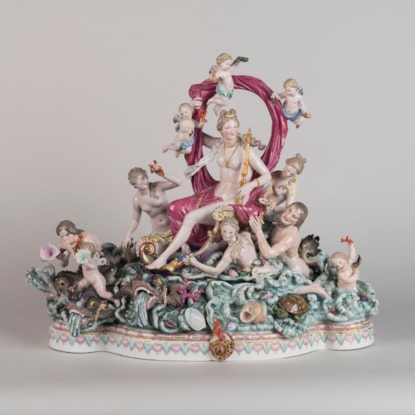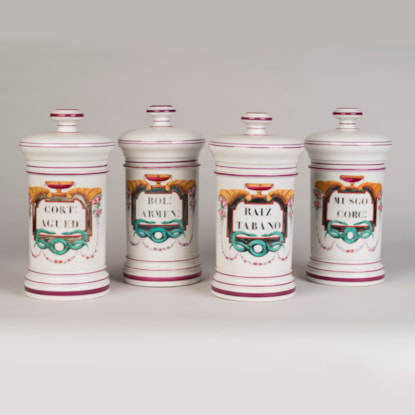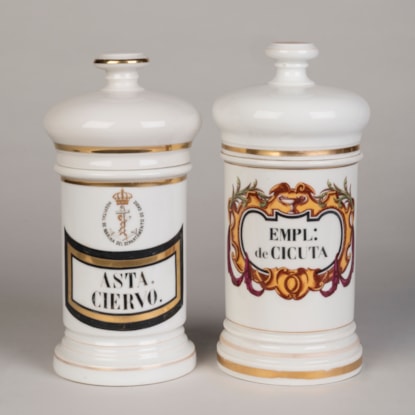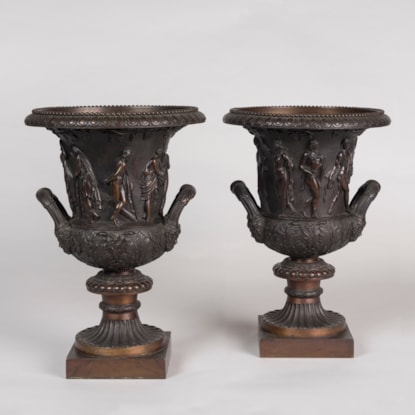Collection / Decorative Objects
An Indian Ivory Inlaid Table Cabinet
An Indian Ivory Inlaid Table Cabinet
Dimensions: H: 12 in / 30 cm | W: 18 in / 46 cm | D: 12.5 in / 32 cm
PRICE: £22,500
Constructed in coromandel, with ivory inlay. The inlaid fall front opens to reveal an arrangement of seven interior drawers, arranged symmetrically, conformingly inlaid. The sides, top and back have similar foliate ivory inlays. India, Gujarat or Sindh, Circa 1690.
This item contains less than 10% ivory and has been registered with Defra.
Closely related cabinets to ours are illustrated in Amin Jaffer, Luxury Goods from India, The Art of The Indian Cabinet-Maker, 2002, published by V&A Publications; vide pp. 18/19, 45, 62-65, as well as the development of this type of cabinet from circa 1550 is also illustrated throughout Mr Jaffer’s scholarly text. The inlaid design on the table cabinet, which was made in Western India, reflects the Mughal court style, which following its’ Islamic traditions, permits only abstract and floral decoration. It typifies the movement from earlier forms of decoration characterised by elaborate foliage and stylised trees towards formalised single flowering plants. This ornament is a reflection of Mughal art ranging from architecture and metalwork to painting and textiles dating as early as the second quarter of the seventeenth century. In particular the arrangement of naturalistic flowers in formal groups is commonly associated with the culmination of Jahangir's reign when he commissioned in 1620, Mansur, the court artist to illustrate flowers of the Kashmir region. Opinion is divided as to whether European albums of flowers played any role in influencing Mansur's depictions of flowers. Shah Jahan, who succeeded Jahangir, continued to promote the stylistic vogue for single flowering plants in the decorative arts and a Mughal embroidered silk wall hanging circa 1650-1700, is preserved in the Victoria and Albert museum. Textiles such as this would probably have been available in the adjacent trading centres of Sindh, (now situated in Pakistan), and Gujarat, which are the likely location of workshops producing ivory-inlaid cabinets of this kind. As both Sindh and Gujarat are on the Arabian Sea, the textiles and cabinets would have been sold to European traders.
You may also like

 Vip access
Vip access

 Favourites
Favourites






